FibriCheck FAQ's: Your questions answered
What is PPG and what distinguishes FibriCheck from other PPG solutions?
Photoplethysmography (PPG) is a non-invasive way to measure changes in blood flow using light. It is commonly built into smartphone cameras or smartwatches. By shining light onto the skin and analyzing the reflection, it helps track heart rhythm.
Where FibriCheck stands out is in turning this simple technology into a medical-grade solution. Unlike consumer PPG tools, FibriCheck is FDA-cleared, prescription-based and proven with >98% sensitivity and specificity for atrial fibrillation detection and monitoring. Apart from a PPG-strip, FibriCheck also provides you with a Tachogram and a Lorenz plot for every measurement.
No additional hardware is needed with FibriCheck, making it highly scalable and easy to integrate into clinical workflows. Providers remain in full control of the data flow, monitoring protocols, and have continuous access to patient data, something consumer devices can't deliver.
How reliable is PPG?
PPG is a clinically reliable method for heart rhythm assessment, proven to match or even outperform handheld ECG devices.
FibriCheck's PPG algorithm has been clinically validated against 12-lead ECG and benchmarked against handheld ECG devices like Kardia and Apple Watch ECG, showing:
Accuracy: 99.2% (vs. Kardia 97.4%)
Specificity: 98.9% (vs. Kardia 96.4%)
Good quality tracing: 92.6% (highest of all tested devices)
These results, confirmed in real-world use (PPV/NPV ≥99.6%), prove FibriCheck to be a clinically robust, hardware-free alternative to handheld ECGs.
How does PPG compare to ECG?
While ECG devices record the heart's electrical activity, PPG captures blood volume changes caused by the heart's pumping activity. It does so by using a smartphone camera and a light source on the skin.
PPG and ECG measure heart activity in different ways, but PPG has been shown to strongly correlate with ECG (99.3% agreement in rhythm intervals), making it a reliable method for assessing heart rate and rhythm.
How do I interpret a PPG result?
PPG results provide a reliable way to assess heart rhythm, with FibriCheck automatically classifying readings using an FDA-cleared algorithm. Key visualizations help you interpret and distinguish normal from irregular rhythms
PPG Signal Strip: shows the raw pulse waveform and beat morphology to assess rhythm regularity
Tachogram: plots beat-to-beat intervals to spot irregular timing or arrhythmias
Lorenz Plot: compares each heartbeat to the previous one to identify AF or ectopic patterns
This data enables you to quickly detect arrhythmias, correlate symptoms with events, and track rhythm changes over time.
How motivated are patients to track their heart rhythm?
Patients using FibriCheck are highly motivated, with real-world data showing >130% compliance after 1 month and 90% sustained at 12 months. (Compliance = measurements taken vs expected, can exceed 100%)
Unlike consumer solutions such as Apple Watch or Kardia, where patients must purchase the device, remember to measure, and manually report results (often leading to gaps and underuse), FibriCheck offers a clinically integrated, prescription-based approach, removing these barriers:
No hardware needed: Immediate use via smartphone
Structured onboarding: Clear guidance from the start
Smart notifications: Gentle prompts to support daily habits
Clinician-linked accountability: A care connection that drives sustained use
Minimalist output: Designed to inform, not overwhelm
Higher, more consistent usage of FibriCheck leads to more data, which allows for earlier and better clinical action.
Can FibriCheck detect other arrhythmias beyond AF?
Using FibriCheck’s clinically validated algorithm you are able to classify and differentiate 14 distinct rhythm types.
This includes:
Brady- and tachyarrhythmias (e.g., sinus bradycardia, supraventricular tachycardia)
Ectopic beat patterns (e.g., bigeminy, trigeminy, isolated/frequent ectopics)
Paroxysmal and self-terminating AF/flutter episodes
Unlike superficial HRV trackers, FibriCheck offers interpretable reports with Poincaré plots, tachograms, and rhythm strips. Each reading gives insights into the arrhythmia type, frequency, progression, symptoms, severity, and activity at the time of the measurement which gives a full contextual picture to support informed clinical decisions.
Is FibriCheck suitable for all skin types?
FibriCheck delivers accurate, reliable measurements across all skin types, including darker tones (Fitzpatrick Types V and VI).
Key findings from our FDA submission data:
Type V: 100% signal success rate
Type VI: 99.5% success rate (403 out of 405 pooled recordings)
Overall: Signal success rates exceeded 98% across all skin types
These results confirm that FibriCheck provides accurate and consistent measurements across diverse populations, supporting inclusive and equitable heart rhythm monitoring that works for everyone.
Does FibriCheck work for patients with PACs?
Today, FibriCheck is not yet able to identify premature atrial contractions (PACs) but by using FibriCheck you are able to interpret other rhythms commonly associated with PACs, such as:
Isolated ectopic beats
Frequent ectopics (>6/min)
Trigeminy and bigeminy patterns
HRV (heart rate variability) variations
In total, FibriCheck enables you to identify up to 14 different arrhythmias including atrial fibrillation, atrial flutter, brady arrhythmias, non-sustained tachy arrhythmias and much more.
How does FibriCheck support clinical decision-making or redo ablations?
FibriCheck provides clinicians with actionable, remote insights to guide post-ablation care, including AF recurrence, load, symptom severity, and symptom-rhythm correlation.
This information helps assess whether a re-do ablation is needed or if adjustments to rate or rhythm control are appropriate. By offering a non-invasive, long-term, patient-friendly way to monitor from home, FibriCheck fills the gaps left by traditional monitoring methods.
How can FibriCheck support post-PFA follow-up?
FibriCheck supports post-PFA follow-up by enabling early detection of ERAT (Early Recurrence of Atrial Tachyarrhythmia) through daily rhythm tracking, thereby helping guide timely, tailored treatment decisions.
Unlike traditional monitoring, FibriCheck captures daily symptom and heart rhythm data without additional hardware. This provides longitudinal, actionable insights during the blanking period, allowing clinicians to:
Detect ERAT early as a predictor of LRAT
Track AF load and rhythm patterns during the blanking period
Personalize follow-up and treatment strategies






